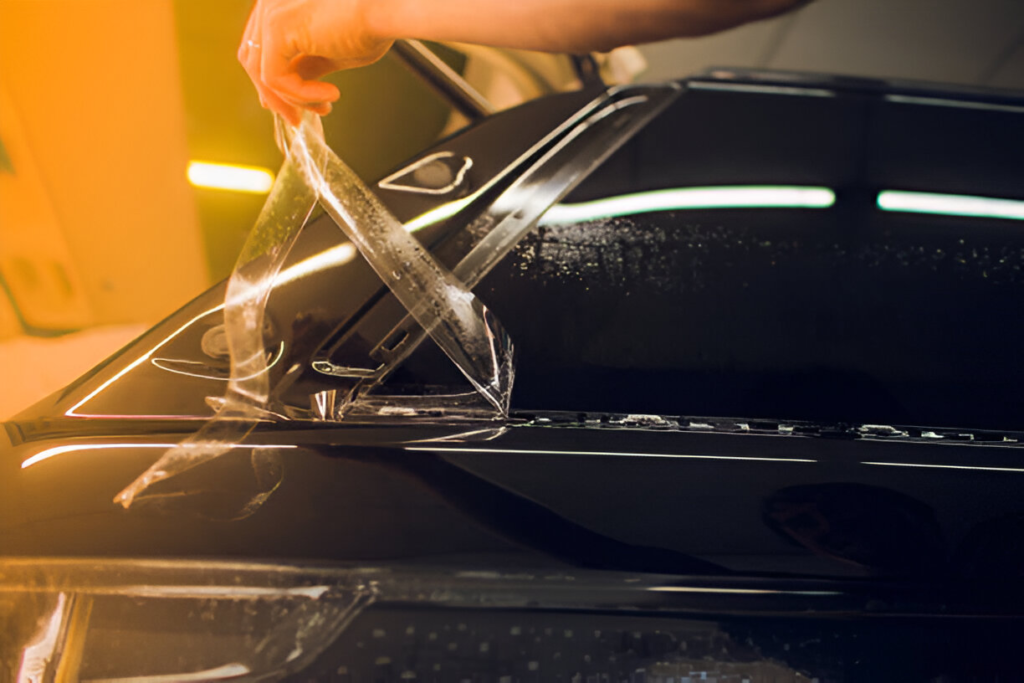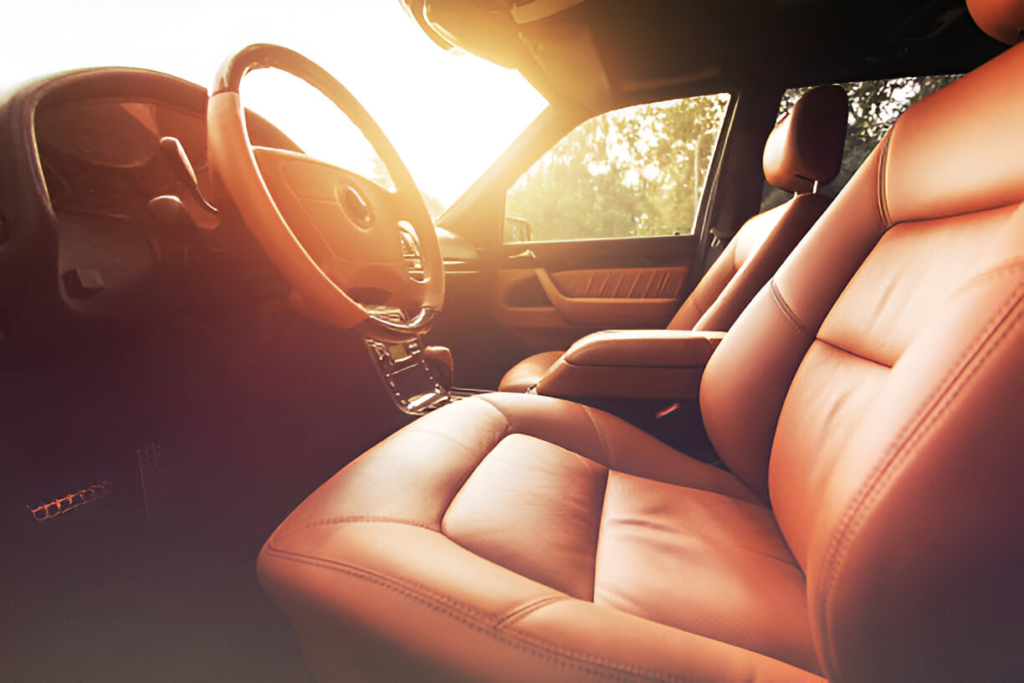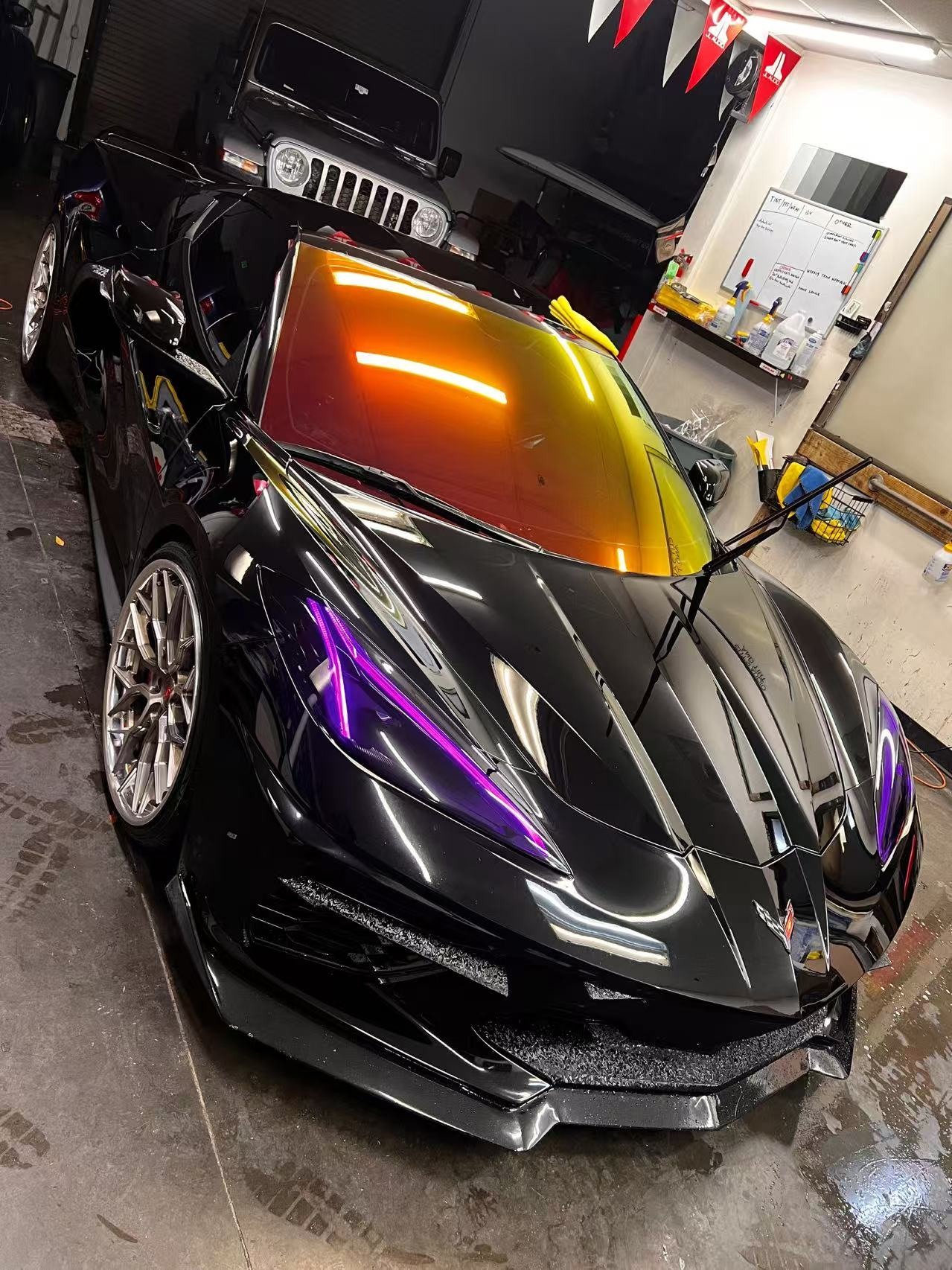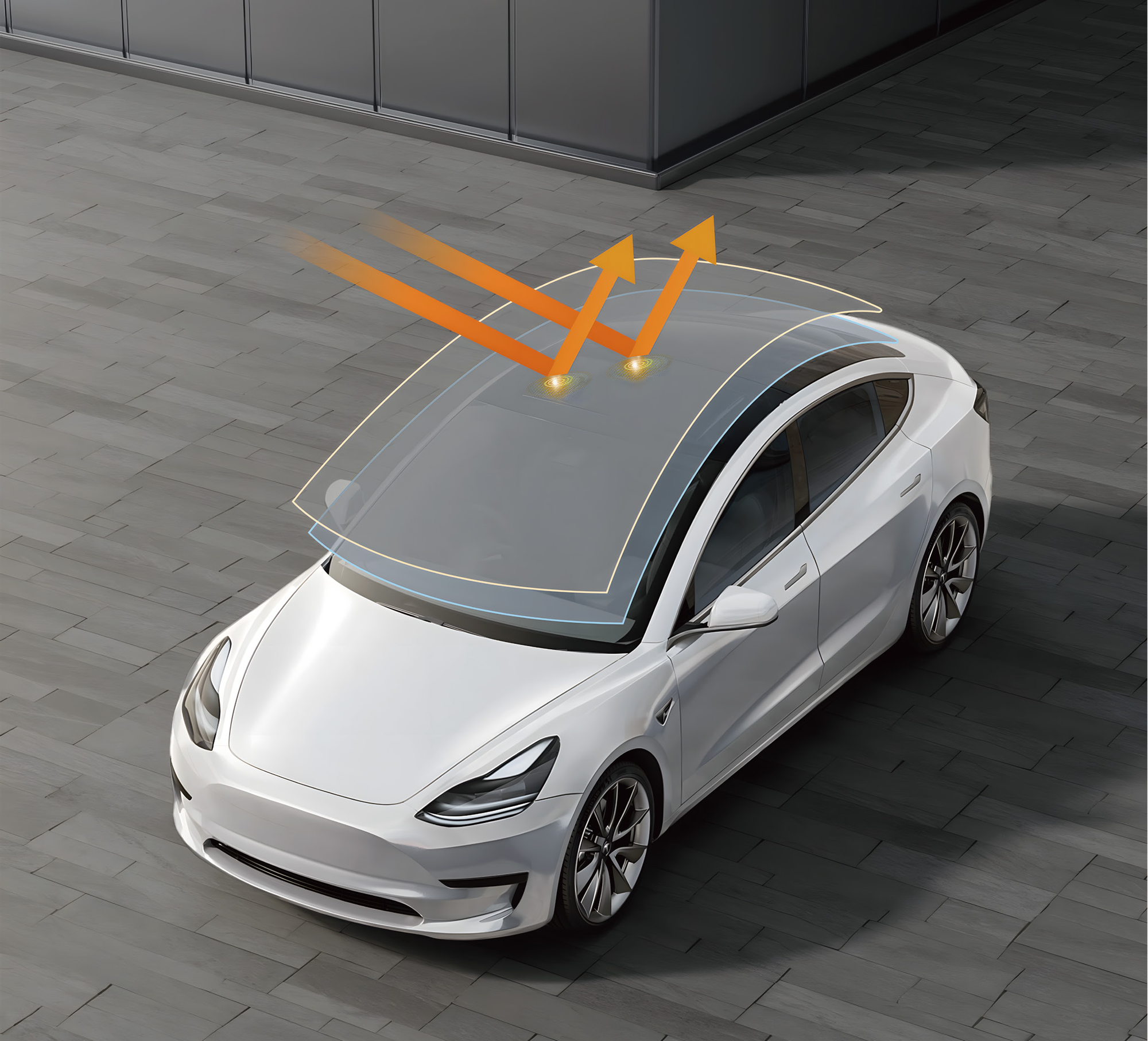 Introduction
Introduction
Window tinting has become increasingly popular for both residential and automotive applications. By applying a thin film to glass surfaces, window tinting offers numerous advantages that enhance your comfort and safety.
Key Takeaway: Window tinting can significantly improve your living or working environment by:
- Reducing heat and glare
- Blocking harmful UV rays
- Enhancing privacy and security
Explore the benefits of window tinting and see how it can transform your space. For more information on high-quality films, check out this resource or browse through various product options.

What Is Window Tinting?
Window tinting involves applying a thin film to the interior or exterior surface of glass windows. This process enhances the functionality and performance of the glass, providing multiple benefits.
How Window Film Works
- Heat Reduction: Window films work by reflecting a portion of the sunlight that hits the glass. This reduces the amount of heat entering a space, making it easier to maintain a cooler indoor temperature.
- Glare Reduction: By filtering out excessive light, window films help reduce glare on screens and other reflective surfaces, improving comfort and visibility.
- UV Ray Protection: High-quality window films can block up to 99% of harmful UV rays, which can cause skin damage and lead to the fading of furniture and other interior elements.
Applying these films can dramatically improve your comfort levels and protect your interior from potential damage.
Understanding these basic principles clarifies how window tinting contributes to a safer, more comfortable environment.
How Does Window Tinting Work?
Understanding how tinted windows work involves delving into the science of heat absorption and UV protection. Window tinting utilizes a thin polyester film applied to glass surfaces. This film is designed to block or absorb specific wavelengths of light.
The Science Behind Tinted Windows
1. Heat Absorption and Rejection
The window film is engineered to reflect and absorb solar energy. Its microscopic layers contain metals or dyes that manage the amount of heat passing through the glass. By reflecting infrared rays, the film helps maintain cooler indoor temperatures.
2. UV Protection
Tinted films can block up to 99% of harmful ultraviolet (UV) rays. These rays are responsible for skin damage and fading of furniture and interiors. The film’s UV-blocking properties act as a shield, ensuring that these detrimental rays do not penetrate the glass.
Impact on Indoor Climate Control
- Temperature Regulation: By reducing the amount of solar heat entering a space, window tinting significantly lowers cooling costs during hot weather. This creates a more comfortable environment without over-relying on air conditioning.
- Glare Reduction: Tinted windows minimize glare on screens and reflective surfaces, providing a more pleasant experience in both residential and commercial settings.
- Energy Efficiency: Properly installed window films enhance energy efficiency by stabilizing indoor temperatures, leading to reduced heating and cooling expenses.
Understanding these mechanisms highlights why investing in high-quality window films can transform your living or working space into a more comfortable, efficient environment.
Benefits of Window Tinting
Window tinting offers a multitude of advantages that enhance both comfort and safety. Here are some key benefits associated with installing window films:
1. Blocking Harmful UV Rays
One of the most significant benefits of window tinting is its ability to block up to 99% of harmful UV rays. These rays can lead to skin damage and accelerate the fading of furniture, flooring, and other interior elements.
2. Reduction in Heating and Cooling Costs
By improving energy efficiency, window tints can substantially reduce heating and cooling costs. The films work by reflecting heat away from the windows during summer months and retaining heat during winter, leading to a more stable indoor climate.
3. Enhanced Comfort
Tinted windows contribute to better temperature control, reducing the need for constant adjustments in your HVAC system. They also minimize glare on screens, making it easier to work or relax without straining your eyes.
4. Increased Safety and Security
Window films add an extra layer of protection by holding shattered glass together in case of an accident or break-in. This feature not only enhances safety but also provides peace of mind.
Understanding these benefits can help you make an informed decision about whether window tinting is right for your home or vehicle.
Types of Window Tint Films You Should Consider
When exploring the best window films for your needs, understanding the various types of window tints available is crucial. Each type offers unique benefits tailored to different requirements:
1. Solar Window Films
Solar window films are highly effective in blocking up to 99% of harmful UV rays and significantly reducing heat entering a space. They allow around 80% of visible light to pass through, making interiors brighter while enhancing energy efficiency.
- Heat Reduction: Helps lower cooling costs by maintaining a more stable indoor temperature.
- UV Protection: Shields skin from UV damage and prevents furniture from fading.
2. Frosted Window Films
Frosted window films are popular for their aesthetic appeal and privacy enhancement capabilities. They diffuse light without blocking it, creating a soft glow that adds elegance to any room:
- Privacy: Ideal for bathrooms, offices, or any space requiring confidentiality.
- Aesthetic Appeal: Provides a decorative touch while allowing natural light to filter through.
3. Security Window Films
Designed to provide an extra layer of protection against break-ins or accidents, security window films strengthen glass, making it more resistant to shattering:
- Safety: Prevents glass fragments from becoming hazardous projectiles in case of impact.
- Security: Deters potential intruders by making break-ins more difficult.
Explore these options to determine which film best aligns with your needs. For professional guidance on selecting high-quality window film solutions, consider reaching out to experts like KSB. Their extensive range of products caters to various requirements, ensuring you find the perfect fit for your home or vehicle.
Additionally, institutions like the Consulate General United States Of America trust these films for their reliability and superior performance, showcasing their effectiveness in diverse settings.
Regulations Surrounding Vehicle Window Tinting You Need to Know About
Understanding vehicle tint laws is essential for anyone considering window tinting for their car. Each state has specific regulations concerning the permissible levels of tint darkness, often expressed as a percentage of visible light transmission (VLT). This percentage indicates how much light can pass through the tinted windows.
Key Points to Consider:
- State-Specific Regulations: Laws vary significantly from one state to another. For instance, while some states allow a maximum of 70% VLT on front side windows, others may permit only up to 50%. It’s crucial to check your local regulations to ensure compliance.
- Legal Limits on Tint Darkness: Typically, these laws apply differently to various parts of the vehicle. Windshields usually have stricter limits compared to rear and side windows. Medical exemptions might be available in certain states for individuals requiring additional UV protection due to health conditions.
Importance of Compliance:
- Avoid Penalties and Fines: Non-compliance can result in fines and mandatory removal of the tint. Repeat offenses might lead to higher penalties.
- Safety Concerns: Excessive tinting can impair visibility, especially at night or during adverse weather conditions, posing safety risks.
- Insurance Implications: Failure to comply with tint laws might affect insurance claims in case of an accident.
Ensuring that your vehicle’s window tint adheres to local laws not only keeps you within legal boundaries but also maximizes safety and comfort during your drives.
DIY vs. Professional Installation: Which One Is Right for You?
When considering window tinting, you have two primary installation options: DIY window tinting or hiring a professional. Each method has its pros and cons, impacting cost, quality, and convenience.
-
DIY Window Tinting
Pros:
- Cost-Effective: DIY kits are generally cheaper than professional services.
- Flexibility: You can work at your own pace and schedule.
- Learning Experience: It can be a rewarding project if you enjoy hands-on tasks.
Cons:
- Skill Level Required: Proper installation requires a steady hand and meticulous attention to detail.
- Quality Concerns: Mistakes, such as air bubbles or misalignment, can lead to subpar results.
- Time-Consuming: The process can be lengthy, especially for beginners.
-
Professional Installation
Pros:
- Expert Quality: Professionals ensure a flawless finish with no bubbles or creases.
- Warranty Options: Many professional services offer warranties on their work.
- Time-Saving: Quick installation without the hassle of doing it yourself.
Cons:
- Higher Costs: Professional services come at a premium price.
- Scheduling: You need to align with the service provider’s availability.
For those opting for professional installation, it’s crucial to choose reputable providers to ensure high-quality results. Some providers even offer cutting-edge products like Nano Ceramic Window Film.
In contrast, DIY enthusiasts might find satisfaction in using products that are designed for easy application, such as the Advanced Paint Protection Film, which boasts features like a strong topcoat and resistance to yellowing.
Evaluating these factors helps determine which route best suits your needs and circumstances.
Cost Considerations for Window Tinting Projects You Should Be Aware Of
Understanding the cost of window tinting is crucial when planning your project. Several factors can influence the overall pricing, making it essential to evaluate each component carefully.
Factors Influencing Cost
1. Type of Film
- Solar Window Films: Effective in blocking UV rays and heat but may come at a higher price due to their advanced technology.
- Frosted Window Films: Often chosen for aesthetics and privacy, typically available at mid-range prices.
- Security Window Films: Provide additional protection, leading to higher costs due to their thicker material and enhanced safety features.
2. Quality and Brand
- High-quality films from reputable brands tend to be more expensive but offer better performance and longer-lasting results.
- Lesser-known brands may offer lower prices but might compromise on durability and effectiveness.
3. Project Size
- Larger projects naturally incur higher costs. Tinting an entire home or office building will cost significantly more than a single vehicle or small room.
4. Installation Method
- DIY installations can save on labor costs but may not yield professional-quality results.
- Professional installation ensures precision and longevity but adds to the overall expense.
5. Regional Pricing Differences
- Costs can vary based on your location. Urban areas with high demand for window tinting services might have higher prices compared to rural regions.
Evaluating these factors helps in estimating your project’s budget accurately. For those looking for high-quality tools and materials, consider visiting KSB window film Material Co., LTD for a comprehensive selection of tinting tools or explore their Nano Ceramic Film Series known for exceptional heat rejection and UV protection.
Conclusion: Maximize Your Comfort with Window Tinting!
Investing in high-quality window films can greatly enhance your living or working environment. The benefits of window tinting stretch far beyond mere aesthetics:
- Enhanced Comfort: Enjoy better temperature control and reduced glare on screens.
- Safety and Security: Prevent glass shattering and increase overall safety.
- Energy Efficiency: Lower heating and cooling costs by improving energy efficiency.
- UV Protection: Safeguard against harmful UV rays that damage skin and furniture.
For those keen on taking their window tinting project to the next level, consider using professional tools designed to improve installation efficiency and precision.
By integrating window tinting into your space, you not only maximize comfort but also contribute to a safer, more energy-efficient environment.
FAQs (Frequently Asked Questions)
What is window tinting?
Window tinting involves applying a thin film to the interior or exterior surface of glass windows. This film works to reduce heat, glare, and UV rays from entering a space, enhancing overall comfort and safety.
What are the benefits of window tinting?
The key benefits of window tinting include blocking harmful UV rays that can cause skin damage and fading of furniture, reducing heating and cooling costs due to improved energy efficiency, enhancing comfort through better temperature control and glare reduction on screens, and increasing safety by preventing glass shattering.
What types of window tint films are available?
There are several types of window films available in the market, including Solar Window Films that effectively block UV rays and heat, Frosted Window Films that enhance privacy and aesthetic appeal, and Security Window Films designed to provide extra protection against break-ins or accidents.
Are there regulations surrounding vehicle window tinting?
Yes, there are state regulations regarding the darkness levels of window tint for vehicles. It's important to comply with local laws to avoid potential penalties or fines associated with illegal tinting.
Should I choose DIY installation or hire a professional for window tinting?
Both DIY installation methods and hiring professionals have their pros and cons. DIY can save money but may lack the quality finish of professional work. Hiring a professional ensures expertise and potentially better results but comes at a higher cost.
What factors influence the cost of window tinting projects?
The overall cost of a window tinting project can be influenced by several factors including the type of film chosen, its quality, brand reputation, size of the windows being tinted, and whether you opt for professional installation or DIY.

 Introduction
Introduction








